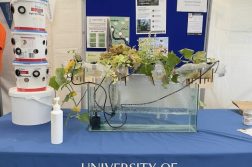The US Air Force has successfully launched X-37B into space on the 17th of May, commencing its sixth mission to further scientific research and help maintain the US as a leading power in the space industry.
X-37B is a small, unmanned, solar-powered orbital test vehicle (OTV) by Boeing that was sent to space by the US on its first mission in 2010. This May it was launched aboard a non-reusable United Launch Alliance Atlas 5 rocket. X-37B remains only in earth’s orbit, while in space, and re-enters the earth’s atmosphere to land in Vandenberg Air Force Base or Kennedy Space Centre between assignments (the last of which was in 2017 after 780 days in space).
The first five flights of #X37B totaled 2,865 days on-orbit and more than one billion miles traveled. Its sixth autonomous mission will help @USNRL transform solar power into radio frequency microwave energy. #USSF7 pic.twitter.com/Pl6i1KnR1e
— Boeing Space (@BoeingSpace) May 16, 2020
The OTV has a 7 feet payload to take experiments up into space. The contents of this sixth mission’s payload remain mostly classified. Unlike, its last 5 trips into space, X-37B will be using its new service module to expand its testing capabilities on this trip.
Although little is usually known about the shuttle’s missions the U.S Air Force has disclosed that
‘Technologies being tested in the program include advanced guidance, navigation and control, thermal protection systems, avionics, high-temperature structures and seals, conformal reusable insulation, lightweight electromechanical flight systems, advanced propulsion systems, advanced materials and autonomous orbital flight, reentry and landing.’
The Air force detailed that they would investigate:
- The reactions of certain materials in space.
- How select seeds react to ambient space radiation.
- The conversion of solar power into radio frequency microwave energy, and how this subsequent energy could be transmitted back to earth.
In light of the Covid-19 pandemic, the US Air Force and United Launch Alliance have added message on the spacecraft rocket to pay homage to responders that have worked during the pandemic. The tribute reads “In memory of COVID-19 victims and tribute to all first responders and front-line workers.”
The US expects the spacecraft to be in space for at least 2 more years on this journey as its endurance continues to improve on each expedition. It is hoped that the data collected from this expedition will advance our understanding of the future of humans in space.



